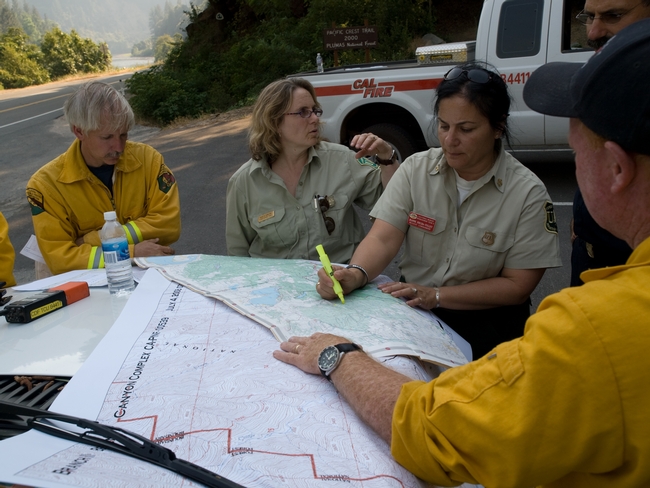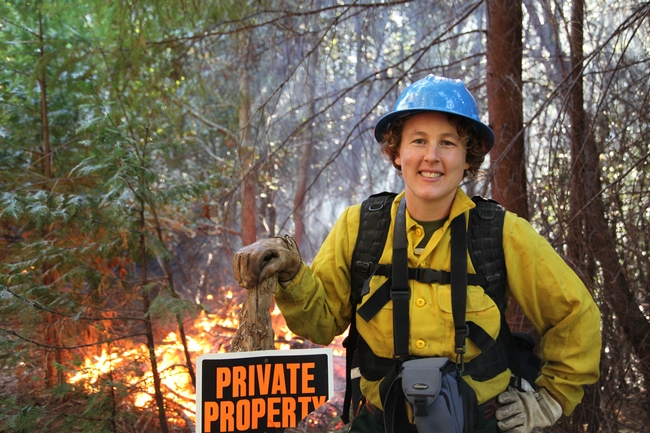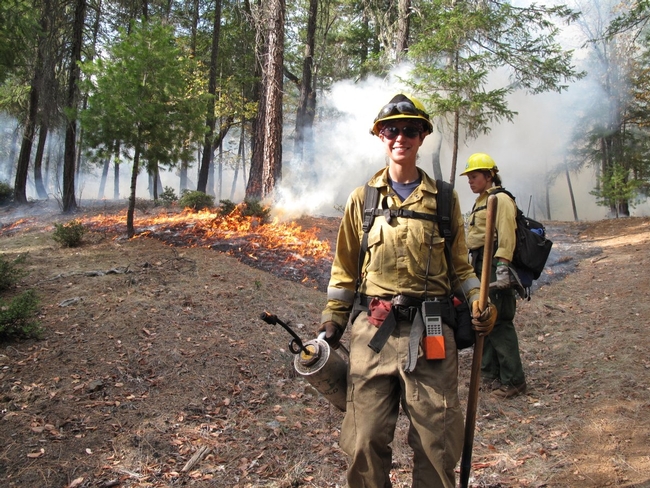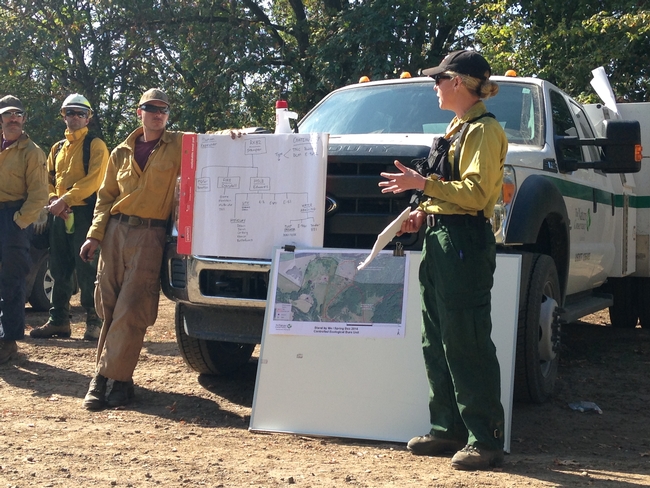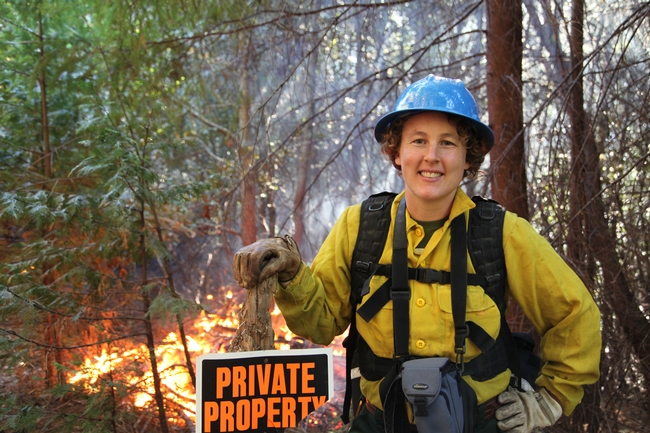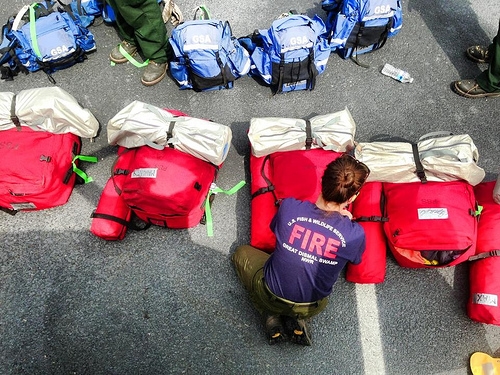Posts Tagged: Women
Carey's 'African Odyssey' Draws Standing-Room Only Crowd
Mosquitoes apparently don't like entomologist James R. Carey, distinguished professor of entomology at the University of California, Davis. "I've...
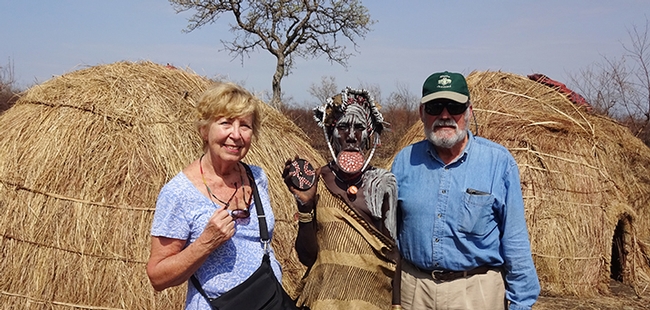
James R. Carey, UC Davis distinguished professor of entomology and his wife, Patty, with a Mursi woman (Ethiopia) showing her lip plate. Also known as a lip disc, it is a status symbol among the Mursi women.

Dung beetles were among the insects that entomologist James R. Carey photographed in Africa.

An African lion, an image captured by Patty Carey of Davis.
Women learn to burn and lead in fire management in Northern California Oct. 19-28
Workshop aims to spark women's ambition to become leaders in fire management
Shortly after her son was born, Jeanne Pincha-Tulley was promoted to fire chief of a national forest. For the first six months, she brought the baby to work.
“Most of my colleagues were men between 40 and 50. I was 31,” recalled Pincha-Tulley, who was the first woman to achieve the rank of U.S. Forest Service fire chief in California. “My second son was 6 weeks old and nursing. They had no idea what to do. They absolutely freaked out.”
While great efforts are being made to recruit women into fire management, women hold only 10 percent of wildland fire positions and 7 percent of leadership roles. A new training focuses on grooming women to lead in fire management.
To encourage to women build stronger networks and pursue leadership roles in fire management, Pincha-Tulley, who retired in 2015 after 36 years with the U.S. Forest Service, will be speaking from experience on gender roles at the Women-in-Fire Prescribed Fire Training Exchange (WTREX) in Northern California. She will also serve as deputy incident commander for the event.
WHO: Participants from 12 states and four countries, including 38 women and six men, who work for federal and state agencies, non-governmental organizations, tribes and universities. Organizers include Pincha-Tulley, Lenya Quinn-Davidson, UC Cooperative Extension wildland fire advisor and director of the Northern California Prescribed Fire Council; and Amanda Stamper, The Nature Conservancy fire management officer in Oregon, among others. Guest speakers include Sarah McCaffrey, USDA Forest Service research social scientist; Johnny Stowe, forester/biologist/yoga teacher/fire manager of the South Carolina Department of Natural Resources; Gwen Sanchez, deputy fire chief for the Shasta-Trinity National Forest, and many more.
WHAT: WTREX participants will serve in qualified and trainee firefighting positions to implement prescribed burns throughout the region. They will complete pre- and post-fire monitoring, train with equipment, practice fireline leadership skills and learn about local fire ecology and fire management.
WHERE: The training will take place in Trinity and Shasta counties. Sites include open prairies, oak woodlands, mixed-conifer forests and chaparral. Field trips will be made to areas burned in recent wildfires and to prescribed fire and fuels treatment project sites.
WHEN: Oct. 19-28, beginning in Hayfork, ending in Redding. Burning and other outdoor activities will depend on the weather.
DETAILS: The 12-day hands-on prescribed fire training, modeled after prescribed fire training events that take place across the country, will include beginners to seasoned professionals. The difference is that most of the participants are women.
“I'm excited for this event because it will transcend the usual TREX emphasis on cooperative burning and learning,” Lenya Quinn-Davidson, UC Cooperative Extension wildland fire advisor, who is part of the team organizing the event. “It will explicitly recognize and reinforce the importance of female perspective and leadership in fire management, and provide a supportive environment for women and men to understand and elevate the need for diversity in fire management—not only in numbers, but also in approach.”
Based at the Tahoe National Forest, Pincha-Tulley oversaw 1.6 million acres, including fire suppression, prescribed fire and aviation operations.
As the only woman among the 17 national Incident Commanders, Pincha-Tulley looked for allies and mentors. In 2005, the year she was promoted to Type 1 Incident Commander, she led her team to Mississippi to assist in the aftermath of Hurricane Katrina. She was essentially invisible to the Air Force generals and Navy admirals until she put general stars on her uniform. A NASA director, a man, coached her, saying, “Are you going to let them take over the meeting? You're their peer, make yourself one.” He proceeded to mentor her, based on NASA's training for women in management.
“When you look for those people who can help, you begin to attract them,” Pincha-Tulley said. One of the primary goals of the Women-in-Fire Prescribed Fire Training Exchange is to connect women who work in fire, providing them with new networking and mentoring opportunities.
WTREX is co-hosted by eight primary partners as well as additional collaborators. These include the Northern California Prescribed Fire Council, the Fire Learning Network, the Cultural Fire Management Council, the Watershed Research and Training Center, the Bureau of Land Management, the USDA Forest Service, the California Fire Science Consortium, University of California Cooperative Extension, and other collaborators.
WTREX is supported by Promoting Ecosystem Resiliency through Collaboration: Landscapes, Learning and Restoration, a cooperative agreement between The Nature Conservancy, USDA Forest Service and agencies of the Department of the Interior.
Lighting up a new path: the Women-in-Fire Rx Fire Training Exchange (WTREX)
On Monday, Oct. 17, participants will gather in northwestern California for the first-ever Women-in-Fire Prescribed Fire Training Exchange (WTREX). The 12-day hands-on prescribed fire training, modeled after similar TREX events that take place across the country, will include participants with a full range of fire qualifications—from beginners to seasoned professionals—and from a diversity of backgrounds, including federal and state agencies, non-governmental organizations, tribes, universities, and more.
Participants are traveling from 12 different states and four countries, and will include 38 women and six men. This event will transcend the usual TREX emphasis on cooperative burning and learning; it will explicitly recognize and reinforce the importance of female perspective and leadership in fire management, and provide a supportive environment for women and men to understand and elevate the need for diversity in fire management—not only in numbers, but also in approach.
WTREX participants will serve in qualified and trainee firefighting positions to implement prescribed burns throughout the region. They will complete pre- and post-fire monitoring, train with equipment, practice fireline leadership skills, and learn about local fire ecology and fire management. The training will take place in diverse forest and rangeland ecosystems across northwestern California, including open prairies, oak woodlands, mixed-conifer forests, and chaparral, and include field trips to areas burned in recent wildfires and to prescribed fire and fuels treatment project sites. It will also feature presentations by local scientists and land managers, and women who are leaders in various aspects of fire management.
For WTREX updates, follow the hashtag #wtrex2016 on Twitter or the Facebook page of the Northern California Prescribed Fire Council. For more information on the council, visit www.norcalrxfirecouncil.org or contact Lenya Quinn-Davidson, UC Cooperative Extension advisor and fire council director, at nwcapfc@gmail.com.
This training is supported by Promoting Ecosystem Resiliency through Collaboration: Landscapes, Learning and Restoration, a cooperative agreement between The Nature Conservancy, USDA Forest Service and agencies of the Department of the Interior. For more information, contact Lynn Decker at ldecker@tnc.org or (801) 320-0524.
Getting the Red In
Forget about getting the red out. It's time to get the red in. And if you're a red lady beetle, aka ladybug, you need not worry. Ditto for...

"Appropiately dressed" lady beetle, aka lady bug. (Photo by Kathy Keatley Garvey)
Just Bee-Cause
In recent years, honey bees received neither recognition nor respect until commercial beekeeper David Hackenberg of Pennsylvania/Florida sounded the...
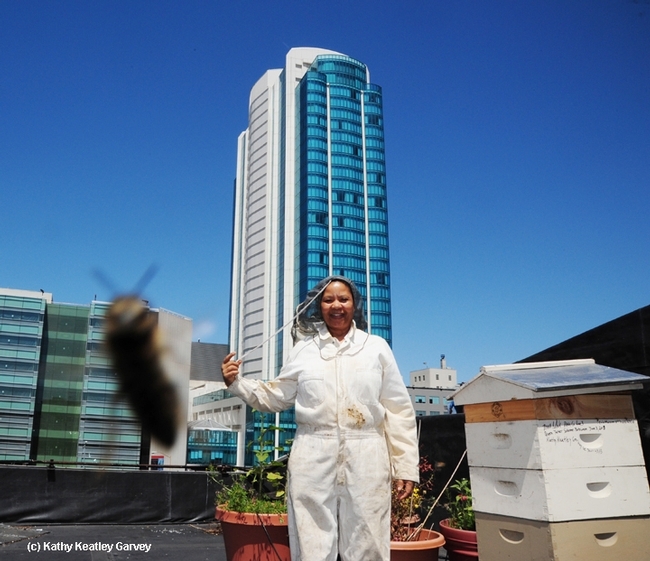
Queen Turner inspects the beekeeping operation on the rooftop of the San Francisco Chronicle. Turner completed a 10-month stay in the U.S. and returned to Botswana where she is head of the beekeeping section of the Ministry of Agriculture in the Botswana government. (Photo: Kathy Keatley Garvey)
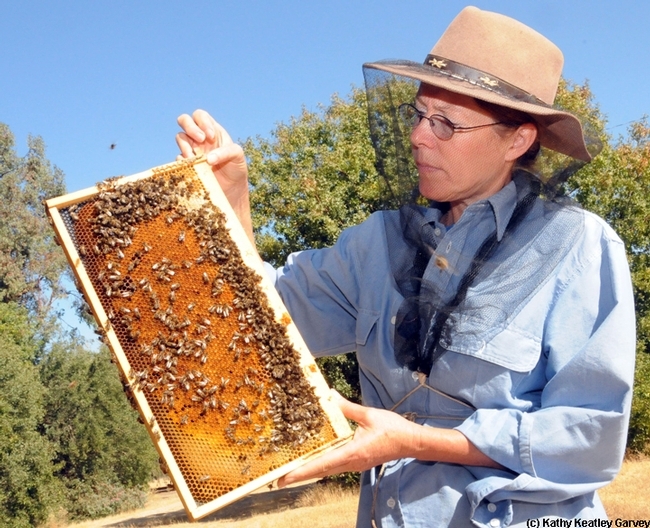
Bee breeder-geneticist Susan Cobey, formerly of UC Davis and now of Washington State University, examines a frame. (Photo by Kathy Keatley Garvey)


